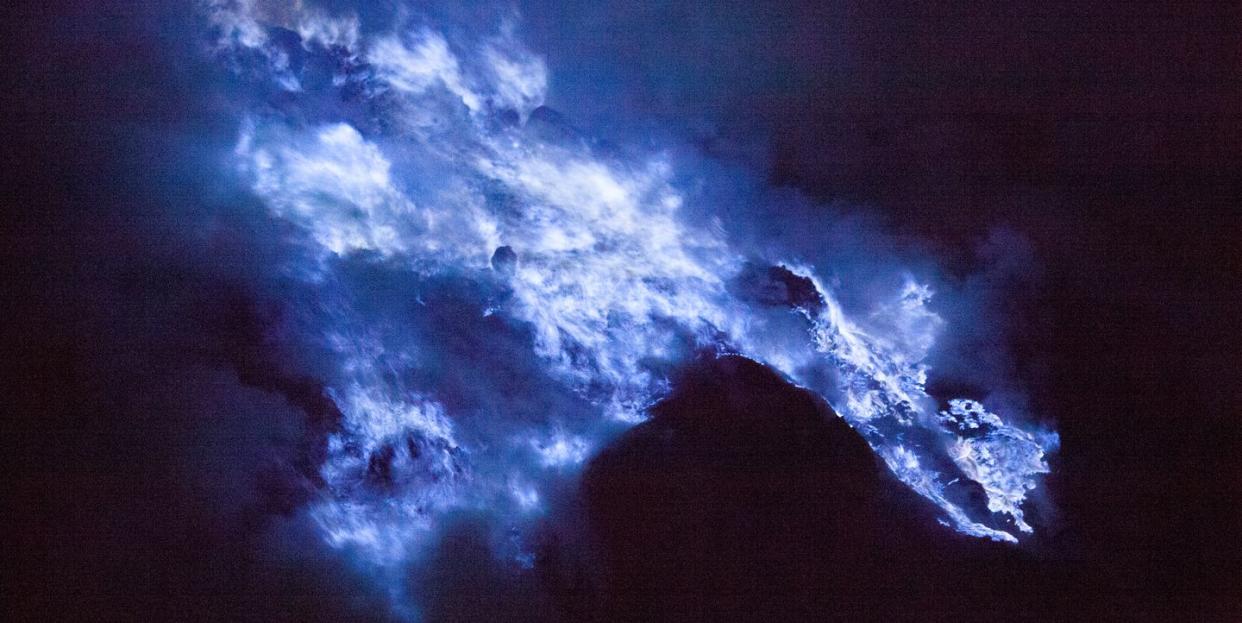Oh Dear, There's a Hole in the Bottom of the Ocean

The floor of the ocean off the coast of the Pacific Northwest has sprung a leak.
The spring, known as Pythia’s Oasis, is likely venting water from beneath local tectonic plates through a fault called the Cascadia Subduction Zone.
This liquid is likely acting as a lubricant between the two plates colliding at the fault, and losing too much of it could increase the likelihood of a damaging earthquake.
The ocean has a leak.
Technically, it’s a spring, because water is flowing in and not out. But in the ways that matter, it definitely is a leak. It’s known as Pythia’s Oasis, and it’s a spring of almost-fresh water most welling up from under the ocean floor through a fault called the Cascadia Subduction Zone.
It was accidentally discovered by then-grad-student-now-White-House-policy-advisor Brendan Philip—who spotted the bubbles that the spring carried to the surface—and a study on the vent was released by Philip and the rest of the research team from the University of Washington earlier this year.
“They explored in that direction and what they saw was not just methane bubbles, but water coming out of the seafloor like a firehose. That’s something that I’ve never seen, and to my knowledge has not been observed before,” Evan Solomon, a seafloor geologist and one of the authors on the paper, said in a press release.
Often times, bubbles coming up from the bottom of the ocean herald hydrothermal vents, which can be hot beds of exciting biological activity. But a spring is a different story, and might be a little bit more worrying.
Because, for our sake, the water in that reserve most likely really needs to stay there. If too much seeps out of the fault, parts of the U.S. may be at higher risk of a literal earth-shaking issue.
The Cascadian Subduction Zone is a large strike-slip fault off the coast of the Pacific Northwest. That’s where two of the tectonic plates that make up the Earth’s crust meet up and slide alongside each other. And the reserve of water bubbling up from Pythia’s Oasis acts as lubrication between these two plates.
“The megathrust fault zone is like an air hockey table,” Solomon said in a news release. “If the fluid pressure is high, it’s like the air is turned on, meaning there’s less friction and the two plates can slip. If the fluid pressure is lower, the two plates will lock – that’s when stress can build up.”
And therein lies the issue. If stress starts to build up, it eventually has to go somewhere. When the stress is too much and the system has to jerk into a new position, the jerk triggers an earthquake. Most likely, a big one. Scientists believe a release of stress in the Cascadia Subduction Zone could trigger a magnitude-9 earthquake that would affect many of those living in the Northwestern U.S.
Unfortunately, when it comes to tectonic plates, there’s not much we can do to stop them from behaving however they’re going to behave. But keeping an eye on geologic activity and monitoring how it changes is one of our best routes for preparing for natural disasters.
“Pythias Oasis provides a rare window into processes acting deep in the seafloor, and its chemistry suggests this fluid comes from near the plate boundary,” Deborah Kelley, an oceanographer and one of the authors on the study, said in a press release. And any window we can look through to gather information is probably a good one to keep our eyes on.
You Might Also Like

